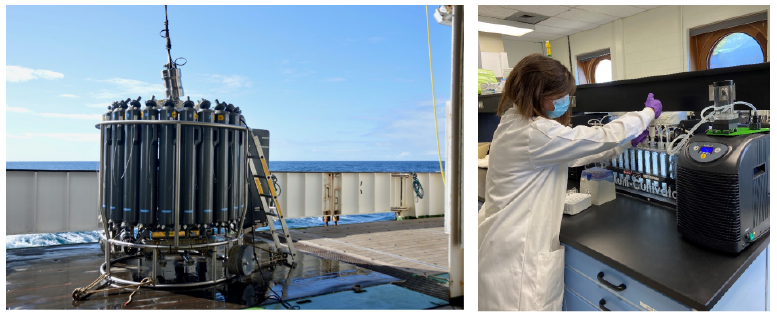 Left: Photograph of a CTD (conductivity-temperature-depth sensor) and rosette of Niskin bottles on the deck of a research vessel at sea. Image credit: Montserrat (Muntsa) Roca Martí, postdoctoral fellow at Dalhousie University. Right: Carolina Cisternas-Novoa (postdoctoral fellow at MUN) working with samples in the multicultivator. Image credit: Dr. Uta Passow (MUN).
Left: Photograph of a CTD (conductivity-temperature-depth sensor) and rosette of Niskin bottles on the deck of a research vessel at sea. Image credit: Montserrat (Muntsa) Roca Martí, postdoctoral fellow at Dalhousie University. Right: Carolina Cisternas-Novoa (postdoctoral fellow at MUN) working with samples in the multicultivator. Image credit: Dr. Uta Passow (MUN).
Theme II will use a combination of laboratory and oceanic field measurements to characterize the community composition of plankton in the NWA, the budgets of nutrients available to these plankton, and the present-day state of BCP variables and fluxes. Data generated from our field expeditions will be used to calibrate sensors on the newly deployed BGC Argo floats. Our new understanding of the BCP will be used to inform next-generation biogeochemical models for the Northwest Atlantic.